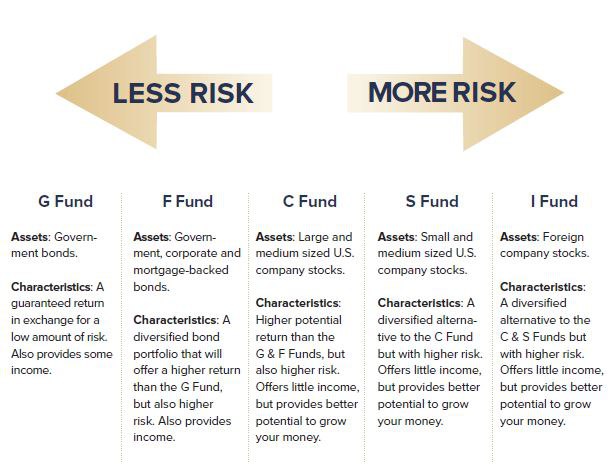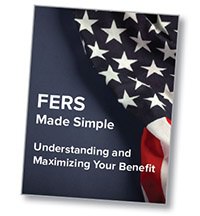Choosing the Right Federal Thrift Savings Plan Investments
August 14th, 2019 | 2 min. read

From postal workers to VA doctors, we’ve had the pleasure to work with many federal government employees. An important factor in their financial success is choosing the right investments in the federal Thrift Savings Plan (TSP).
Unlike the FERS Basic Benefit, your TSP is fully under your control. Although that may sound challenging, it should be looked at as a valuable opportunity. Your TSP can significantly grow over the course of your career, which can make it the difference in achieving the retirement you’ve always wanted.
Thrift Savings Plan investment options
The TSP has five basic investment options, ranging from very conservative to very aggressive. (There is actually a sixth investment option: Lifecycle Funds. However, they require more explanation than can be provided in this general blog.) You don’t have to choose just one. You can invest in several funds to help spread your risk among different investment options and achieve a greater degree of diversification.
The investment options are as follows:

When choosing investments, it’s important to remember the primary difference between stocks and bonds as it pertains to risk. Stocks generally have higher risk for loss, but higher potential for growth. Conversely, bonds generally have lower risk, but also lower potential for growth. However, bonds typically provide a consistent payment of income in the form of interest.
Tips for choosing investments in your Thrift Savings Plan
Start aggressive then reduce risk closer to retirement. Generally, the majority of your money, if not all of it, should be allocated to stocks (the C, S & I Funds) early in your career. As you approach retirement, you should start to reduce risk and move money to more conservative investments (F or G Fund) in an effort to protect it. How much you allocate to each fund and when you start to transition to more conservative investments is a matter of your personal situation. It is, however, important to take the right risks at the right time.
Avoid investing too conservatively. After the financial crisis in 2008, many people moved money into conservative F and G Funds. Unfortunately, many of these people then missed the stock market rebound. It is important to maintain some level of risk for growth potential. Choose a mix of funds with a level of risk you’re comfortable with and keep it until the time of retirement dictates more conservative investments.
Avoid investing too aggressively. Some investors make the mistake of investing in funds that have the highest historical returns while ignoring the high risk associated with these funds. (Stocks, historically, have performed better than bonds, but with higher risk.) They typically have very high concentrations in the C, S and I Funds. This strategy may work well for those who are younger and have many years to recover from losses, or those who have a high risk tolerance.
Learn more about government retirement benefits, including the FERS basic benefit, the Thrift Savings Plan and other retirement planning steps, by downloading our free, easy-to-understand guidebook, FERS Made Simple: Understanding and Maximizing Your Benefit. (Click the button below.)

Advance Capital Management is a fee-only RIA serving clients across the country. The Advance Capital Team includes financial advisers, investment managers, client service professionals and more -- all dedicated to helping people pursue their financial goals.

